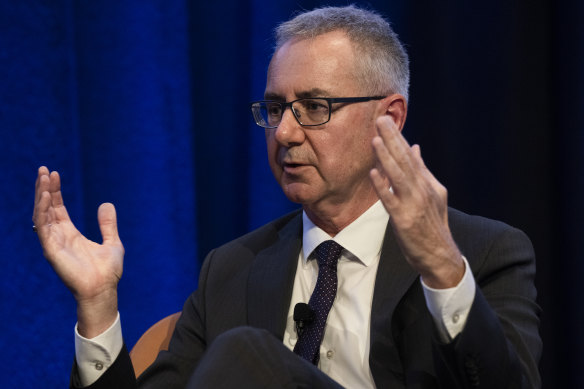
But Deloitte Access Economics partner Cathryn Lee said while the government had saved much of the extra revenue it had collected in recent years, delivering back-to-back surpluses, the budget was struggling because both sides of politics going back many years had failed to implement policies that would stiffen the economy.
Loading
“There has been a lack of substantive economic reform in Australia over a period stretching more than two decades,” she said.
“That has resulted in a coddled and cosseted economy bereft of competitiveness and dynamism.
“Economic and productivity growth are moribund and real incomes are declining, while income, wealth and intergenerational inequality has morphed into a broader schism through Australian society.”
Global ratings agency S&P Global on Monday downgraded its outlook for economies across the Asia-Pacific, including Australia, partly due to a slowdown in demand and the fallout from the Trump administration’s planned tariff policies.
It now expects Australian economic growth of 2.1 per cent next year and 2.2 per cent in 2026, down 0.1 and 0.2 percentage points respectively from its previous forecasts.
“The impending change in the US administration will be challenging for China and the rest of
Asia-Pacific,” it said.
“While much of the region should be able to continue to grow solidly, central banks will probably remain cautious by not reducing their policy rates too fast. And risks have gone up.”
Australian Prudential Regulation Authority chair John Lonsdale used a speech in Sydney to argue that while financial risks had persisted over the past year, the sources of uncertainty were shifting.
Announcing the authority would maintain its 3 percentage point buffer on new mortgages, Lonsdale said the risk of shocks to household incomes from a weaker jobs market was being exacerbated by “uncertainty in the global economic environment, including geopolitical instability”.
He said the buffer was not just about ensuring new borrowers could repay their loans.

APRA chair John Lonsdale says uncertainty around the global economy is shifting.Credit: Louise Kennerley
“At a system level, it is a contingency against economy-wide risk factors, such as a rise in unemployment or the impact of an international trade war,” he said.
“In short, it’s a buffer for uncertainty – something there is no shortage of in the current geopolitical environment.”
APRA said the proportion of new lending to first-time buyers was in line with long-term averages, noting that saving a deposit remained the “primary restraint” on potential purchasers.
Loading
Some of the nation’s biggest banks and parts of the Liberal Party are arguing the 3 percentage point buffer be reduced, saying it prevents first-time buyers from getting into the market.
A Senate inquiry into the issue, to be released this week, is expected to argue that the buffer be cut.
Inquiry chair and Liberal spokesman for homeownership Andrew Bragg said by APRA’s own admission, the buffer was a blunt instrument.
“This is more evidence the buffer is blunting homeownership for prospective first home buyers,” he said.
“It is also more evidence the buffer is not dynamic. It seems to be frozen in time, which is bad for Australians who want in on the dream.”
Cut through the noise of federal politics with news, views and expert analysis. Subscribers can sign up to our weekly Inside Politics newsletter.



























